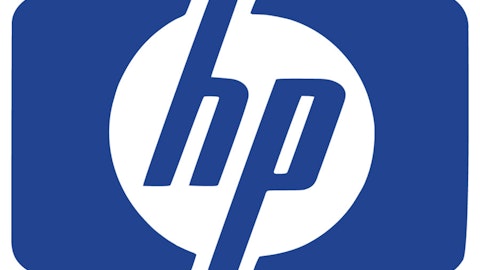Sometimes the markets offer deals. The mobile device market has two key players: Apple Inc. (NASDAQ:AAPL) and Samsung (NASDAQOTH: SSNLF). Oddly, Apple is trading at a discount to Google Inc (NASDAQ:GOOG) and Microsoft Corporation (NASDAQ:MSFT) based on its price-to-earnings ratio:
| Ticker | Company | P/E | P/S | P/B | P/FCF | EPS Growth Next 5 Years |
| NOK | Nokia (NYSE:NOK) | NA | 0.38 | 1.36 | NA | 5.0% |
| BBRY | BlackBerry | NA | 0.86 | 0.87 | NA | 10.0% |
| AAPL | Apple | 10.43 | 2.62 | 3.39 | 9.86 | 19.0% |
| MSFT | Microsoft | 15.39 | 3.22 | 3.23 | 11.36 | 8.4% |
| GOOG | 24.42 | 5.21 | 3.65 | 19.59 | 14.3% |
Apple also has healthier earnings growth projections than its more richly-valued peers.
Investors have to ask if there is any reason to jump in with Apple Inc. (NASDAQ:AAPL)’s shakier competitors, Nokia Corporation (ADR) (NYSE:NOK) and Research In Motion Ltd (NASDAQ:BBRY) BlackBerry, or if there is any meaningful justification for Apple being priced at such a discount to Microsoft and Google.

For the first time, Apple Inc. (NASDAQ:AAPL) passed Samsung as the top mobile-phone manufacturer in the U.S., selling nearly 18 million units during the fourth quarter, or nearly a 38% increase from a year earlier. Apple now has a 34% of the US market, while the South Korean company has a 32% share as it sold nearly 17 million handsets. LG remains a distant third by selling less than 5 million devices, which amounts to a 9% market share.
While Samsung is the global leader in mobile phones by offering less expensive mobile phones based upon Google’s Android OS, the USA has always remained a stronghold for Apple Inc. (NASDAQ:AAPL). The Cupertino, California-based company also had an increase in worldwide shipments of its iPhone by 4% during the fourth quarter, totaling 52 million phones.
The iPhone was introduced back in 2007 and its touchscreen, wide variety of apps and user friendliness quickly turned into Apple’s biggest revenue source. Strategy Analytics analyst Neil Mawstron stated, “Apple’s success has been driven by its popular ecosystem of iPhones and App Store, generous carrier subsidies, and extensive marketing around the new iPhone 5 model.” Since its launch, a new version has been introduced approximately every year, after which the previous model gets a price cut and becomes more accessible to customers that would otherwise look elsewhere for a less expensive alternative.
On the other hand, Samsung offers a more diverse portfolio, ranging from less expensive, more basic phones to larger-screen, top of the line devices. According to analysts, Samsung should regain its top spot in the US during 2013 when new devices are released, such as the Galaxy S4. As well, according to analysts Apple might slow down as concerns from investors remain as to whether Apple CEO Tim Cook can develop and launch new hit products as late Steve Jobs did.
Besides smartphones, tablet computers are the other market in which both Apple and Samsung are the main competitors. Even as Apple was first to the market with the iPad, and still remains in the top spot after the launch of the iPad mini and a fourth-generation iPad, Samsung has toughened the competition by launching several tablets also based on Google’s Android OS. Worldwide tablet sales increased 75% during the fourth quarter, to nearly 53 million devices, with Samsung more than doubling its market share from around 7% to 15%, while Apple’s market share declined from 52% to 44%. On third place is Amazon.com, Inc. (NASDAQ:AMZN), with an increase from 8% to 12%, followed by Asus and Barnes & Noble. The rise in tablet demand came from lower average prices, holiday spending and new products. IDC’s Research Director for Tablets Tom Mainelli stated, “New product launches from the category’s top vendors, as well as new entrant Microsoft, led to a surge in consumer interest and very robust shipment totals during the holiday season. The record-breaking quarter stands in stark contrast to the PC market, which saw shipments decline.”





